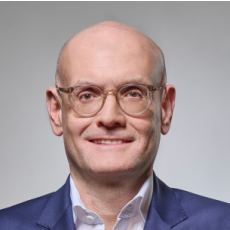Looking back over your 26 years with ALTANA, what stands out as your proudest moment, and how have you seen the chemicals industry—and innovation within it—evolve during that time?
The real privilege has been being able to shape the company’s future over such a long period. We’ve focused on investing in innovation and building a strong culture that empowers our people to drive the company forward. The results from last year show again that this is paying off—we’ve built real momentum.
The most important pivot over the past 10 to 20 years has been the growing role of sustainability as a primary driver of innovation. For us, it’s not only the key to growth but also an area where we invest heavily. Every year we spend around 7% of our turnover on R&D, which is significantly above the industry average.
Most of our innovation is focused on helping customers reduce their environmental footprint. This shift reflects a broad industry transformation.
Where might the average person encounter ALTANA’s products in daily life, and how exactly are they designed with sustainability in mind?
ALTANA’s technologies show up virtually everywhere. For example, in food and beverage packaging, many of our solutions come from our ACTEGA division, such as closure compounds—the liners inside bottle caps that seal them. Our technology strengthens the cap, allowing it to be made with less metal like steel or aluminium. Applied to billions of units, it saves thousands of tons of material, reducing emissions during transportation and significantly decreasing packaging materials.
Another area is wind energy. Offshore windmills are massive structures, and our ELANTAS division supplies electrical insulation systems that ensure these generators function reliably over decades. These materials help prevent voltage breakdowns and partial discharges. Our additives for reinforced plastics contribute to the turbine’s strength, extending its lifespan. You’ll also find our products in automotive coatings. Our effect pigments provide the metallic finish while enabling the use of water-based coatings, reducing emissions. Our insulation systems are key to making electromobility more resource-efficient, even for high-performance vehicles.
You reported double-digit growth in 2024. What in your assessment was the main driving factor behind that growth, particularly in the Asian markets?
The growth in 2024 was primarily volume-driven. Regionally, our Asian markets led the way—not just China, but also India, which has seen double-digit growth for the fourth consecutive year. Southeast Asia and South Korea also contributed strongly. We’ve been growing above the global industry average, and the same applies to Asia. That’s thanks to our innovation strategy and how we’ve positioned ourselves in those markets.
Compared to more established regions like Europe and North America, the market dynamics in Asia are different—there’s more growth momentum due to ongoing economic development. Europe and the Americas also grew, but not at the same pace. Increasingly, growth is coming from the sustainability-focused innovations we’ve invested in. That’s where future opportunities lie: in solutions that help customers reduce their environmental footprint while enabling high performance and efficiency.
How do you encourage customers to adopt new sustainability-focused technologies, particularly when they are accustomed to existing solutions?
As with any innovation, you always have early adopters and those with a more cautious approach. Our aim is to win over the entire customer base. So far, that’s been going well. We expect organic growth in the mid-single-digit percentage range in 2025, and the first few months of the year have supported that outlook.
In our business, we deal with technical conservatism. Our products are specialty components in larger systems, and customers don’t want to change something that already works. So we need strong arguments. Our innovations offer sustainability benefits, and we try to work with more innovative customers to start. Once we have success in one application, it encourages others to follow suit, especially when new standards are set in the market.
Given the current global uncertainties, how do you manage the risks associated with regional challenges, and how do you adapt to differing market dynamics in these regions?
We’re a global company, with about a third of our business in each of the Americas, Europe, and Asia. A real strength of ours is our decentralized structure—we have local production sites and operations in all major regions. That setup allows us to serve key markets regionally, which helps mitigate risks. Of course, we’re in a time of heightened uncertainty, but that’s been true for several years—pandemics, supply chain crises, geopolitical conflicts. We’ve been able to adapt, and I’m confident we’ll continue to do so.
Regulation is present everywhere. It’s both a challenge and an opportunity, especially in the chemical industry, where we can support our customers in navigating complex requirements. However, it’s the growth momentum in Asia that remains stronger, as those markets are at a different stage of economic development.
What future technologies and R&D developments are you most excited about in terms of advancing your sustainability efforts?
A long-standing favourite of mine is a range of dispersing additives from our BYK division. More than 10 years ago, we recognised the potential of application in lithium-ion batteries and opened a lab in Japan to support development. Today, it’s one of our biggest growth drivers. It shows how important it is to invest, take a long-term view, and grow our people alongside our technology.
One example of a recent success is YUNICO® from our ACTEGA division. It provides barrier properties for packaging—like pouches, pizza cartons, and beverage cups—that protect the product from moisture or grease. YUNICO® replaces unrecyclable laminates with a recyclable coating, maintaining the same barrier performance. This kind of innovation makes me confident that investing in sustainability-focused R&D will help us grow well into the future.





